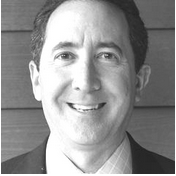Germany’s IFO business confidence index for December fell a touch to 117.2 m/o/m from 117.6 in November. The estimate was 117.5. The components though were mixed as Expectations fell by 1.5 pts while the Current Assessment was up by almost 1 pt. The IFO said simply, “German businesses are full of festive spirits.” Notwithstanding the slight miss, the euro is higher and European bond yields are too, getting dragged up by the rise in long term US rates. The DAX is basically flat on the day.
The US 10 yr yield is kissing 2.40% again after yesterday’s move. This is the 4th time over the past month it has and I’d be surprised if it didn’t break thru to the upside, especially with all the optimism on the equity side with Trumponomics. The real test for European bonds of course will begin in 2 weeks with the slowdown in ECB purchases. Speaking of which, the man who might be replacing Mario Draghi in 2019, Jens Weidmann, said they are “on track toward our definition of price stability.” He reiterated that he wants a firm end date to QE instead of the open ended nature that Draghi left it with. If he or another German does take over, you can also assume that negative interest policy would end sooner rather than later.
On this last point, keep an eye on the German 2 yr yield which is just one bp from being the least negative since early August.
I’ll say this about 2018, if global equity markets are right about a continuation of the ‘global synchronized recovery’ and the hopes for a robust acceleration in US growth in particular on the heels of the tax bill, there is no way interest rates are going to be sitting at current levels. They are going up and considering how much debt has been accumulated globally post recovery, expect a less quiescent year next year. US fiscal stimulus (for some) came just in time as it will attempt to offset the monetary drag that will pick up steam but who will dominate is up in the air after the victory for the former in 2017.
Don’t even get me started with Fed President Neel Kashkari who still thinks the fed funds rate should be at .625% and is trying to explain his stance. He believes in depression era monetary policy with equity valuations matching the year 2000, the US economy possibly in the 3rd straight quarter with 3% growth with fiscal stimulus ahead, wage pressures building everywhere, commodity prices near 9 month highs, core CPI at 1.7% (well above .625%) and a continued pile up of malinvestment due to a ‘fake’ level of interest rates which upends creative destruction. And, if we go into a recession at some point and all the Fed has is 625 bps of ammunition…Either way, he doesn’t vote next year so his practical viewpoint is irrelevant now.
Labor costs in the eurozone in Q3 rose 1.6% y/o/y which is down from 1.8% growth in Q2 but is pretty much in line with the 3 year average of 1.5%. Draghi won’t be happy but at least it’s in line with inflation (zero real wage gains). Draghi might get his 2% inflation goal but if wages improve to 2% too, real wages will still be zero.
To my point above, the Australian 2 yr note yield rose to a 2 month high after the minutes from the last Reserve Bank of Australia meeting spoke optimistically about their economy. “Over the prior year or so, the unemployment rate had fallen and inflation had moved closer to target. Members noted that this had occurred at the same time as risks in household balance sheets had lessened. Recent data had increased confidence that there would be further progress on these fronts over the following year.” The Aussie$ is up slightly and the ASX rallied by .5%. The RBA benchmark rate is currently at 1.50%.
A day after a key election victory for Narendra Modi in India in his previous bastion of Gujarat, the Indian Sensex closed at a record high. It remains my favorite international story and stock market in emerging markets.

 Peter is the Chief Investment Officer at Bleakley Advisory Group and is a CNBC contributor. Each day The Boock Report provides summaries and commentary on the macro data and news that matter, with analysis of what it all means and how it fits together.
Peter is the Chief Investment Officer at Bleakley Advisory Group and is a CNBC contributor. Each day The Boock Report provides summaries and commentary on the macro data and news that matter, with analysis of what it all means and how it fits together.